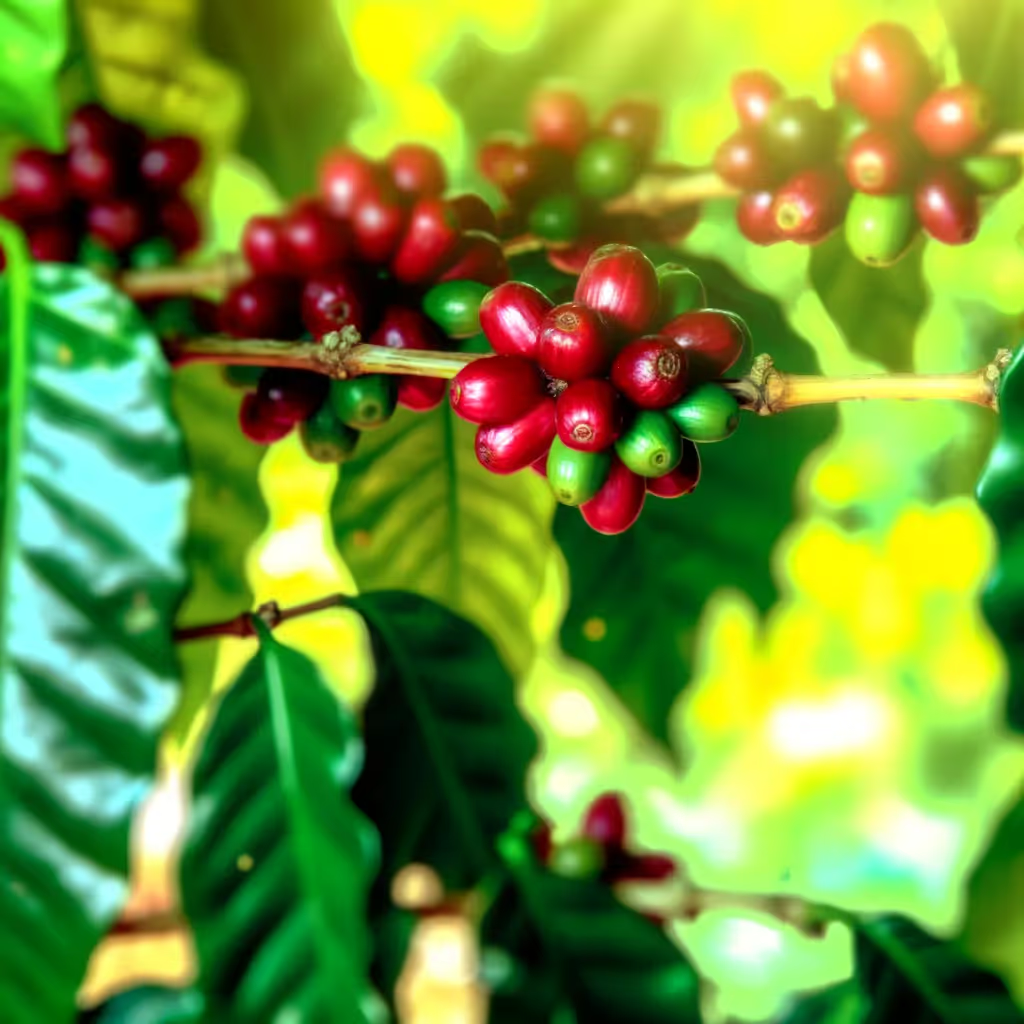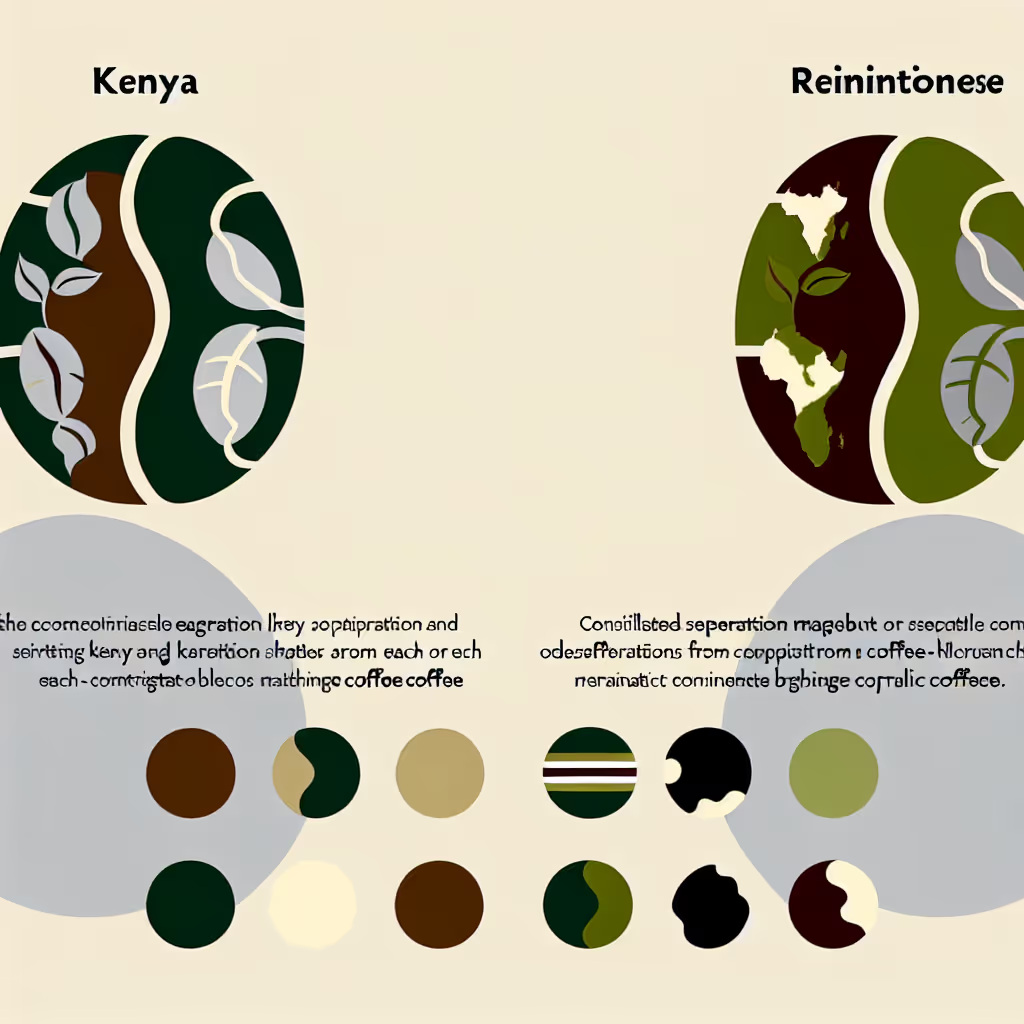Kenyan Vs. Philippine Coffee
This comparison explores the unique qualities of Kenyan and Philippine coffee, highlighting their distinct flavor profiles, growing conditions, and cultural significance in the world of specialty coffee.

Brief Description
Kenyan coffee is renowned for its bright acidity, full body, and complex flavor profile. Grown in the rich volcanic soils of the Central Highlands, these beans benefit from ideal climate conditions and meticulous processing. The result is a cup that's bold, wine-like, and often described as the 'connoisseur's choice'. With notes ranging from blackcurrant to citrus, Kenyan coffee offers a truly unique and memorable tasting experience.
Philippine coffee is a hidden gem in the world of specialty coffee. Grown in the lush mountains of the Cordillera region, these beans offer a unique flavor profile that reflects the diverse landscapes of the archipelago. With a rich history dating back to the 18th century, Philippine coffee is experiencing a renaissance, with farmers focusing on quality and sustainability to produce exceptional beans that are gaining recognition on the global stage.
Importance of Comparison
Comparing Kenyan and Philippine coffee is crucial for coffee enthusiasts seeking to expand their palate and understand the diverse world of single-origin beans. These two origins offer contrasting flavor profiles and represent different coffee-growing traditions, providing valuable insights into how geography, climate, and processing methods influence the final cup.
Key Attributes
Origin
Kenyan
Philippine


Consumer Guide
When choosing between Kenyan and Philippine coffee, consider your flavor preferences. Kenyan coffee is known for its bright acidity and complex, wine-like flavors with notes of blackcurrant and citrus. It's ideal for those who enjoy a bold, vibrant cup. Philippine coffee offers a more balanced profile with chocolate and nutty notes, appealing to those who prefer a smoother, less acidic brew. Consider brewing methods as well; both origins excel in pour-over and French press, but Philippine coffee is particularly well-suited for espresso. Altitude and processing methods also play a role in flavor development, with Kenyan beans typically grown at higher elevations and processed using the washed method, while Philippine beans offer more variety in processing techniques.
Expert Opinions
Coffee expert Maria Rodriguez notes, 'Kenyan coffee is often considered the pinnacle of brightness and complexity in the coffee world. Its unique double fermentation process contributes to its distinctive flavor.' On Philippine coffee, master roaster John Chen states, 'The resurgence of Philippine coffee is exciting. Its balanced profile and versatility make it a hidden gem, especially for those exploring beyond traditional coffee origins.'
FAQs
Kenyan coffee is known for its bright acidity, full body, and complex flavors including blackcurrant, citrus, and floral notes. Philippine coffee tends to have a more balanced profile with prominent chocolate and nutty flavors, often accompanied by subtle citrus undertones.
Kenyan coffee is typically grown at higher altitudes (1400-2100m) in volcanic soils of the Central Highlands, while Philippine coffee is cultivated at slightly lower elevations (1000-1800m) in the lush mountains of the Cordillera region. These differences in altitude and soil composition contribute to the distinct flavor profiles of each origin.
Both Kenyan and Philippine coffees are versatile and work well with various brewing methods. Pour-over and French press are excellent choices for both origins, highlighting their unique characteristics. Cold brew is particularly good for Kenyan coffee, while Philippine coffee shines in espresso-based drinks.
Kenyan coffee is primarily processed using the washed method, often with a unique double fermentation process that contributes to its complex flavor. Philippine coffee offers more variety in processing, including washed, natural, and honey methods, allowing for a wider range of flavor profiles.
The Philippines produces more coffee annually, with an output of around 70,000 metric tons compared to Kenya's 50,000 metric tons. However, it's important to note that production volume doesn't necessarily correlate with quality or flavor profile.
Kenya has a relatively recent coffee history, with commercial production starting in the early 20th century. This has led to a focus on quality and innovation in processing. The Philippines, on the other hand, has a coffee history dating back to the 18th century, experiencing periods of boom and decline. Today, Philippine coffee is undergoing a renaissance, with a renewed focus on quality and sustainability.
Conclusion
Both Kenyan and Philippine coffees offer unique and rewarding experiences for coffee enthusiasts. Kenyan coffee stands out for its bright acidity, complex flavors, and wine-like qualities, making it a favorite among connoisseurs seeking a bold, distinctive cup. Philippine coffee, with its balanced profile and chocolate-nutty notes, provides a smoother, more approachable option that's gaining recognition in the specialty coffee world. Ultimately, the choice between these two origins comes down to personal preference and the desire to explore the diverse flavors that single-origin coffees can offer. We encourage coffee lovers to try both and appreciate the rich tapestry of flavors that these two origins bring to the world of coffee.






